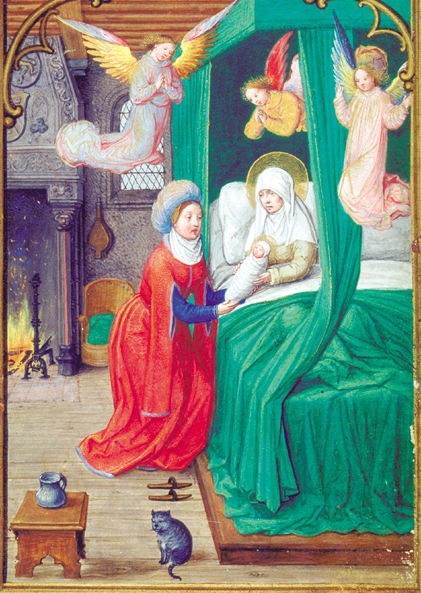Image Details

Chester Beatty Library
The infancy of Mary. “Is it a boy or a girl?” Anna, like any new mother, asks her midwife when Mary is born (James 5:5–7). Dating to about 1550, this illumination from a prayer book in Dublin’s Chester Beatty Library captures the bipolarity of sacred births: They are earthly (note the 16th-century bourgeois domestic setting, the delightful cat, the discarded slippers beside the rumpled bed) and at the same time more than earthly (thus, the angels).
The water jug in the foreground may be a vestige of earlier depictions of the birth of Mary, which often depicted midwives bathing the infant. (Many early images of Jesus’ nativity also show the bathing of the infant.) There is no text—canonical or noncanonical—describing this event, but it was customary in Roman times to include the bath in scenes of a great person’s birth. We have pictures, for example, of Alexander the Great’s first bath, and that of certain deities, such as Dionysus.
